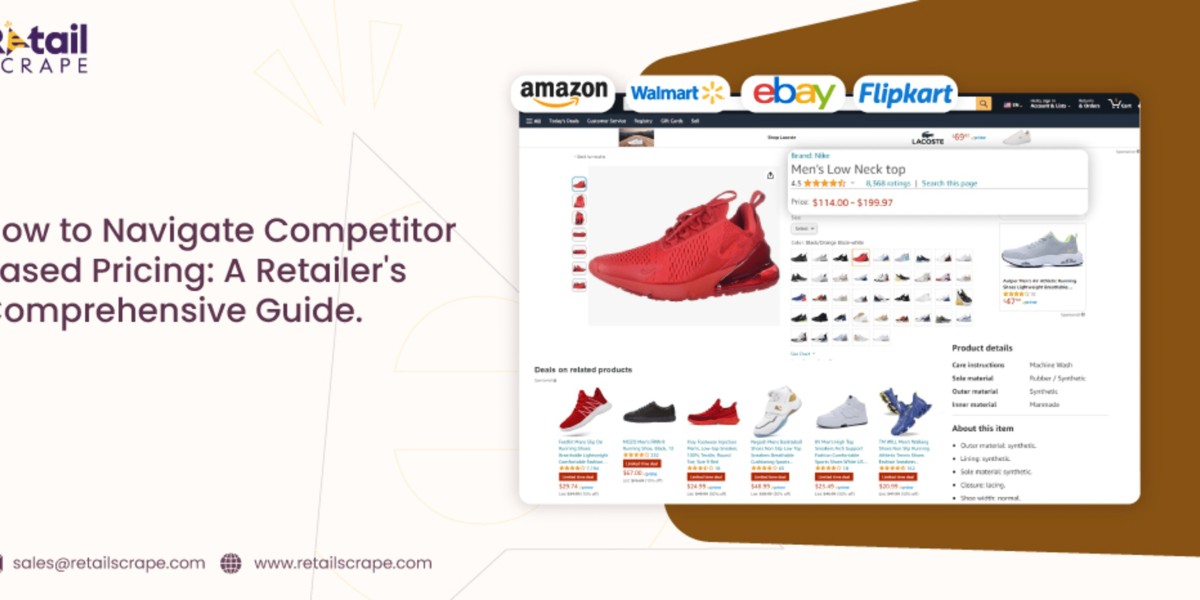
Introduction
In today’s highly competitive market, where consumers are presented with a plethora of choices, setting the right price for your products is crucial. To avoid losing potential customers and to protect your profits, it is important to properly analyze and align your pricing with that of your competitors and what buyers expect. This blog post will discuss competitor-based pricing in depth, including its benefits and drawbacks. You will learn about different types of competitive pricing strategies and how they differ from other tactics. You will also gain insights into product matching and competitive intelligence, as well as learn steps to create a solid competitive pricing plan for your business. Let’s start with the basics! .
About Competitor-Based Pricing Strategy

A competitor-based pricing strategy, also known as a competitive pricing strategy, involves setting product prices based on a thorough analysis of competitors in the market. By aligning prices with competitors, businesses ensure they remain competitive and appealing to buyers, considering that price is a key factor for consumers. Widely adopted in B2C commerce, this strategy is particularly relevant in markets where products vie for attention on physical and digital shelves. In the online realm, retailers and marketplaces present customers with diverse options and detailed information, facilitating informed choices that cater to individual needs.
The use of a competitor-based pricing strategy is notably widespread among Consumer Packaged Goods (CPG) brands, such as Pepsi and Coke, closely monitoring competitor movements to adjust their pricing. However, this strategy is not solely about offering equivalent or lower prices; it also hinges on factors like market trends and brand perception. While reducing prices is one aspect, a market leader with a strong brand can remain resilient to changing pricing dynamics, leveraging its image to surpass competitors. Walmart exemplifies this with its successful Everyday Low Price (EDLP) strategy. Conversely, Apple relies on its brand prestige, allowing it to command higher prices and maintain customer loyalty. While Apple’s approach is exceptional, initial competitive pricing may be necessary to build awareness and attract your target audience.
Undervaluing your products or services can have a substantial impact on your profit margins. Although it may serve as a short-term strategy to stimulate immediate sales, it may not be financially sustainable in the long run. Therefore, it is crucial to carefully evaluate various options before deciding to implement the competitor-based pricing strategy. Assessing the potential long-term implications and considering alternative approaches will help ensure a more sustainable and strategic pricing strategy for your business.
Competitor-Based Pricing Strategies: Some Examples?
Effective pricing strategies stem from a meticulous analysis of competitors, brand perception, market dynamics, and buyer preferences. Consider the following competitor-based pricing options with these factors in mind:
Pricing Below Competitors

New entrants often adopt this strategy by pricing their products lower than competitors to gain traction and seize market share. For instance, a new cereal brand may offer lower prices or enticing perks like discounts to persuade buyers to switch from pricier options like Kellogg’s.
Price Matching Competitors

Brands implementing this strategy establish their products or services at the same prices as their competitors. This often happens when brands are in close proximity or share digital platforms. For instance, neighboring gas stations or eateries might offer products at precisely the same cost. Retail behemoths like Amazon and Walmart participate in ongoing price wars, consistently aligning with or surpassing each other’s prices.
Pricing Above Competitor Prices

This strategy involves businesses offering additional features or superior quality compared to competitors and setting prices accordingly. In this approach, customers make purchasing decisions based on perceived value and are willing to pay a premium for enhanced offerings.
Does this sound familiar?
Now, let’s delve into a detailed exploration of the benefits and drawbacks of competitor-based pricing.
Pros and Cons of Competitor-Based Pricing

Pros:
Dynamic Approach
This strategy is responsive to market shifts, easily adjustable using retail analytics and competitive intelligence platforms like Retail Scrape.
Ease of Implementation
Simplifies pricing decisions, relying on competitor rates without the need for complex formulas, fostering benchmarking against multiple competitors.
Flexibility and Adjustability
Compatible with other pricing methods, allowing integration with alternative strategies like the cost-plus approach for a comprehensive pricing model.
Safety Net
Minimizes the risk of untested pricing strategies, providing a higher likelihood of building a dedicated customer base and staying relevant in the competition for wallet share.
Cons:
Unpredictability
Small businesses may struggle to afford competitive intelligence tools, making it challenging to keep up with dynamic pricing and monitor competitors consistently.
Rigidity
Fails to consider factors such as production costs, consumer demand, and product value, limiting a holistic view of the competitive landscape.
Imposed Uniformity
Hinders the ability to differentiate products based on unique value propositions, preventing the opportunity to justify higher-end prices and showcase product benefits.
When implementing a competitor-based pricing strategy, especially against established names or businesses of varying sizes, consider these factors for optimal results.
In essence, a competition-based pricing strategy is reactive. For startups with limited resources, relying solely on competitor pricing can be risky. It’s crucial to explore alternative pricing strategies, ensuring an informed decision before embracing this approach. Consider your unique business context and objectives for a more comprehensive and strategic pricing model.
Alternative Pricing Strategies

Cost-Plus Pricing
A traditional and straightforward approach, cost-plus pricing considers production costs and adds a profit margin. While low-risk, it may not always be the best method as it overlooks product value, consumer appetite, and competitor prices.
Demand-Based Pricing
This strategy sets the price based on the demand for a product. High demand results in higher prices. Implementing this can be challenging, as sellers may lack a reliable method to gauge demand without expert insights from a competitive intelligence platform like Intelligence Node. Common in e-commerce during peak times and seasons, this method is also gaining traction in sectors like online cab services where prices surge during peak demand.
Competitor-based pricing is just one option among many. Choose the pricing strategy that aligns with your business model and needs, ensuring a balance between product value and profitability.
Value-Based Pricing
Also referred to as customer-based pricing, this strategy hinges on customer perception to determine product prices. Unlike internal decision-making or using competitors as benchmarks, value-based pricing takes an outward look. This approach is particularly suitable for brands offering unique or premium products. By aligning prices with the perceived value by customers, businesses can capture the true worth of their offerings in the market.
Building a Competitor-Based Pricing Strategy
Despite ranking as the fifth-largest car rental company, Alamo emerged as America’s most profitable business in the early 90s by leveraging a “price below competitor” strategy, strategically expanding into regions dominated by Hertz.
To ensure long-term success with a competitor-based pricing strategy, consider the following steps:
Identify Goals
Decide whether competitor-based pricing is a short-term tactic for market penetration or a long-term strategy to become a low-cost market leader, similar to Walmart. If the latter, complement it with other strategies to cover production costs and showcase product value.
Perform Competitive Analysis
Conduct a comprehensive analysis of your competitors, identifying their strengths and weaknesses. Focus on attracting customers by creating additional value or enhancing operational efficiency. This positive-sum approach ensures sustainable success and shields against retaliation.
Know Your Customers
Understand your customers’ preferences and needs before implementing competitor-based pricing. Don’t fear pricing products on the higher end, as many buyers prioritize value over lower prices. Actively engage in social listening to gauge buyer sentiment and preferences.
Conclusion
Modern shoppers, being digital natives, extensively explore options before making purchases. To cater to their needs, leverage AI-driven solutions to monitor competitor pricing, ensuring your products rank effectively on digital shelves. Stay ahead with competitive pricing intelligence. Contact Retail Scrape for more details.








